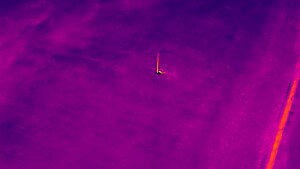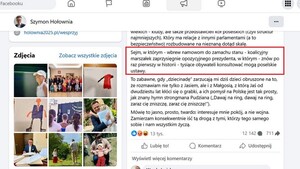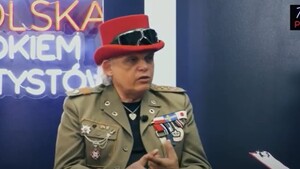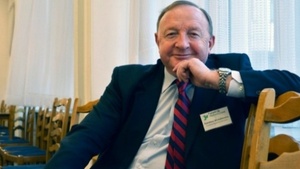The New York Times i The Associated Press szkalują polskich bohaterów, oskarżają Polaków o kolaboracje z nazistami, i atakują PIS

Na stronie internetowej The New York Times ukazała się depesza The Associated Press, w której amerykańskie media szkalują polskich bohaterów, oskarżają Polaków o kolaborację z nazistami, i atakują PiS. Niektórym Amerykanom nie spodobały się obchody 75 rocznicy powstania Brygady Świętokrzyskiej.
Polskę i Polaków szkaluje jedno z najważniejszych mediów w USA. Jak można przeczytać w Wikipedii „The New York Times" to „jeden z najważniejszych amerykańskich dzienników, wychodzący w Nowym Jorku. Jest trzecią pod względem nakładu gazetą w Stanach Zjednoczonych, po USA Today i The Wall Street Journal. Codzienny nakład wynosi 1,125 mln, a obieg wydania niedzielnego 1,700 mln (dane na 26 grudnia 2004). Właścicielem gazety jest The New York Times Company, która kontroluje również około 40 innych gazet, czasopism i wiele krzyżówek, między innymi The Boston Globe i International Herald Tribune".
Z kłamliwego artykułu pod tytułem „Polska honoruje grupę wojenną współpracującą z nazistami" amerykańscy czytelnicy dowiedzą się, że „polscy urzędnicy przyłączyli się do weteranów wojennych w niedzielę, aby złożyć hołd podziemnym siłom z czasów II wojny światowej, które pod koniec wojny współpracowały z nazistowskimi siłami niemieckimi w ich walce z komunistami, którzy narzucali kontrolę nad narodem. Msza w Warszawie rozpoczęła uroczystości ku czci Brygady Świętokrzyskiej Narodowych Sił Zbrojnych w 75. rocznicę jej powstania. Partyzanci zostali uhonorowani za ofiary dla ojczyzny. Oficjalny patronat prezydenta Andrzeja Dudy i obecność urzędników partii rządzącej podkreśliły rehabilitację przez prawicowy rządu jednostki partyzanckiej, która walczyła zarówno z Niemcami, jak i Sowietami i jest celebrowana przez skrajną prawicę".
Według amerykańskiego dziennika „chociaż historycy twierdzą, że Brygada Świętokrzyska współpracowała z nazistami, przedstawiciel weteranów, Jan Józef Kasprzyk, próbował zaprzeczyć takiemu powiązaniu. Kasprzyk opisywał roszczenia o współpracy jako produkt powojennej komunistycznej propagandy mającej na celu zatarcie spuścizny jednostki. Oficjalna rehabilitacja brygady rozpoczęła się, gdy polski premier Mateusz Morawiecki uhonorował swoich członków na cmentarzu w Monachium w lutym 2018 r. Morawiecki stwierdził podczas konferencji prasowej tego samego dnia, że byli „żydowscy sprawcy" Holokaustu".
Zdaniem amerykańskiego dziennika „obchody rocznicowe w niedzielę w Warszawie zostały skrytykowane przez dzieci polskich bojowników ruchu oporu. [...] Naczelny rabin Polski odrzucił zaproszenie na uroczystość upamiętnienia, nazywając to „osobistą zniewagą". Przeciwnicy obchodów zorganizowali protest, podczas którego ludzie trzymali sztandary z napisem „Nie! Do współpracy" i ''Współpraca z wrogiem to zdrada''".
W artykule opublikowanym przez amerykański dziennik nie ma ani słowa o tym, że Brygada Świętokrzyska NSZ była jedynym oddziałem partyzanckim, który wyzwolił niemiecki nazistowski obóz koncentracyjny i uratował przed śmiercią tysiąc więźniarek (w dużej części Żydówek).
By przeciwstawiać się antypolskim kłamstwo o polskich bohaterach, warto kolportować na anglojęzycznych stronach internetowych stanowisko IPN w sprawie Brygady Świętokrzyskiej NSZ.
The Holy Cross Mountains Brigade was the only Polish partisan unit during World War II, which as a partisan unit liberated prisoners of a concentration camp outside Polish territories. It was a women's camp in Holiszów, a sub-camp of KL Flossenburg, in which over 1000 women of various nationalities were imprisoned.
The Holy Cross Mountains Brigade (Polish: Brygada Świętokrzyska) of the National Armed Forces was one of the largest partisan formations operating on Polish territory. Its soldiers fought simultaneously against the German occupiers and the communist underground, the latter not recognizing the legal Polish authorities in exile and constituting the forefront of the new Soviet occupation. Thanks to a happy coincidence and skillful diplomacy of the commanders, the whole unit managed to get to the West, avoiding the internal breakdown by neither the Wehrmacht , the Waffen SS, nor the Red Army. It was also the only unit of the Polish independence underground which established tactical contact with the forces of the Western Allies, joined them and cooperated tactically in the fight against Germany in the last days of World War II.
The unit was established on 11 August 1944 in the Lasocin estate. The Brigade conducted activities against the Germans. They were, however, limited in nature and consisted of self-defense, the protection of the local population against repressions and pacification activities, as well as the supply of weapons and military materials. The soldiers of the National Armed Forces fought several dozen battles and skirmishes against the gendarmerie, the Wehrmacht and the Luftwaffe troops, as well as collaborative formations: the Ukrainian Schutzmannschaft and the Turkestan Ostlegionen. During one of the battles (27 August 1944), the Brigade fought against a reconnaissance unit of the Ostlegionen which was supported by an armored train. A month later, on 20 September, in the proximity of Cacow, the Brigade fought a battle against a German unit composed of about 400 Luftwaffe soldiers and around 100 gendarmes. The Świętokrzyska Brigade also carried out activities against communist units that were, in fact, Soviet agents. In the whole of the Brigade's history, there has not been a single case of its soldiers murdering Polish Jews due to their ethnic origin. It should also be noted that Poles of Jewish origin served in the ranks of this formation.
The Americans investigated the Polish unit in terms of counterintelligence, considering it as a non-German unit, but an allied unit. The Brigade was the only Polish unit that obtained the right to wear badges of American units and to carry weapons in May 1945, which are visible in photographs - American stars, the head of a native American, symbols of American divisions.
The Holy Cross Mountains Brigade was the only Polish partisan unit during World War II, which as a partisan unit liberated prisoners of a concentration camp outside Polish territories. It was a women's camp in Holiszów, a sub-camp of KL Flossenburg, in which over 1000 women of various nationalities were imprisoned. The attack of the Polish unit on the camp complex saved the lives of Hungarian Jewish women which the German camp personnel intended to burn alive. Then, the Brigade troops established tactical contact with units of General George Patton's 3rd American Army. In joint battles, the Poles and Americans captured the soldiers of the German 13th Army, including two generals. In a ceremonial speech, Colonel Antoni Szacki, "Bohun Dąbrowski" (commander of the unit), wrote to his subordinates: "Today our banners are fluttering alongside the victorious American colors, alongside the banners of the liberated Czech nation. Providence has allowed us once again to take part in the fight against the eternal enemy and to contribute to the joint effort of united nations. In this moment so memorable for us, I thank you for the trust you have given me. Your trust has enabled me to fulfill most of the tasks that we have set ourselves. " In January 1945, in the face of the Soviet offensive, the Brigade's command, fearing the approaching Red Army and the NKVD, attempted to retreat west and save the unit as a force capable of fighting for free Poland. Thanks to local, improvised and tactical agreements with German units, the Brigade began marching westward towards the Allied forces. During the march, the Commander of the Brigade did not agree to subordination and military cooperation with Germany. He also did not allow the disarmament of the unit. Ultimately, the unit was sent to the Czech Republic and left without further orders. During the march, it managed to establish contacts with the Czech underground. At the same time, emissaries were sent to the headquarters of the Supreme Commander and Allied troops.
After the end of the war, the unit was inspected by representatives of the Supreme Commander, and its soldiers and officers were trained in the II Corps of General Anders. In view of the pressure on the part of the Soviets, who unlawfully demanded the handing over of the Polish unit, the American army caused the dissolution of the unit and the creation of units supporting US occupation forces in Germany (Polish Guard Companies).
The NSZ - National Armed Forces were indisputably part of the Polish resistance movement, and only a number of their units merged with the Home Army. The remaining ones fought for independence outside the ranks of the Republic of Poland's Armed Forces re-created underground. Among them was, for instance the Peasants' Security Guard, formed by the "Roch" Peasants' Party independently of the Peasants' Battalions.
Jan Bodakowski
Źródło: JB











![Dramat w Chełmnie! Kierujący Mitsubishi staranował 6 osób! [VIDEO]](https://www.prawy.pl/thumb/300x169/uploads/images/kierujacy-mitsubishi-1752294676.png)

